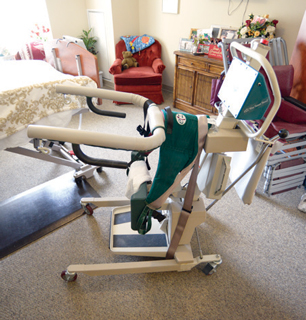
Staff often leave patients who use wheelchairs seated on the hoist slings required to get them there.
A British study published late last year finds the right type of sling can reduce pressure and reduce the risk of wounds as patients sit.
“The choice of sling should be considered carefully for those at high risk of pressure ulcer development, particularly for the in-situ sling design,” writes lead author Jo Webb, senior lecturer in occupational therapy at the School of Health Sciences at the University of Salford.
Webb’s research found that slings made with spacer fabrics — knitted panels connected by “spacer” yarns — reduced pressure on the gluteal area better than slip-fit or standard issue polyester versions.
While slip-fit slings are designed to reduce friction, their polyester makeup is non-breathable.
The spacer slings provide three layers for moisture release, air flow and heat dissipation. Moisture can be one of the biggest impediments to good skin care.
Webb and her colleagues studied pressure readings in 32 patients who use wheelchairs, monitoring pressure points over a 16-minute trial. The spacer fabric reduced peak pressure at the ischial tuberosities and the coccyx region nearly equal to pressure without a sling.
The full study appears in December’s Journal of Tissue Viability.
From the February 01, 2018 Issue of McKnight's Long-Term Care News



